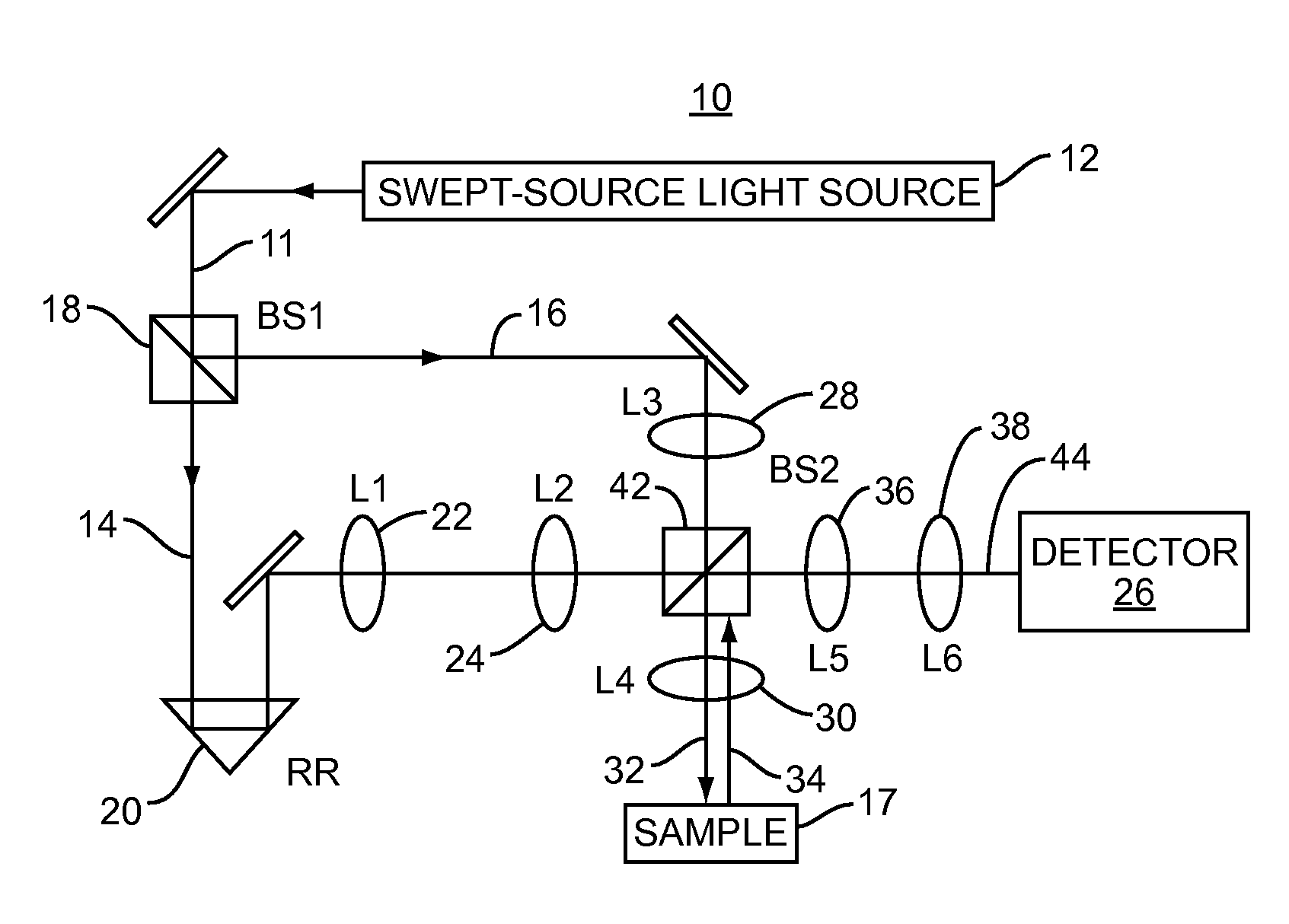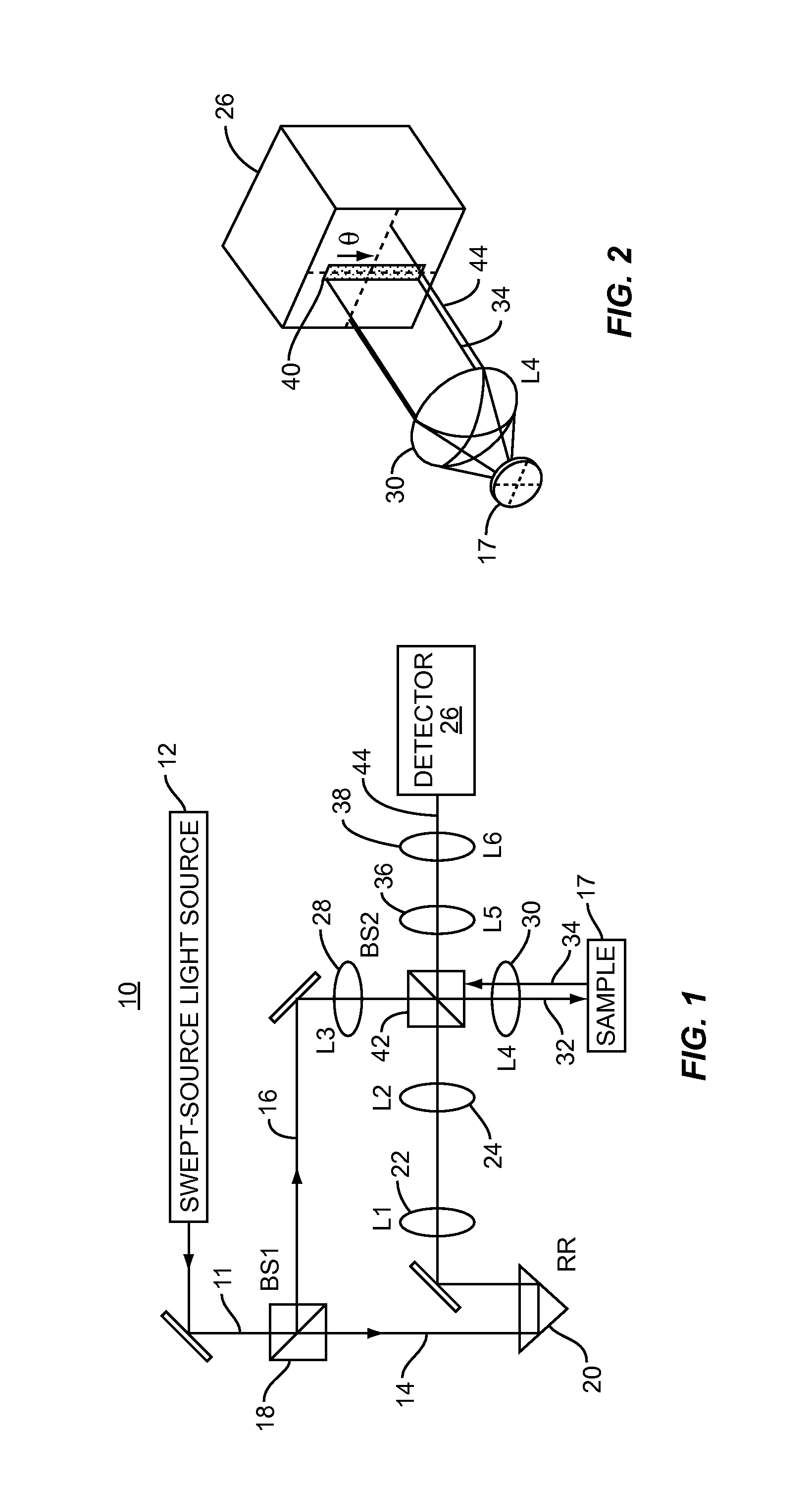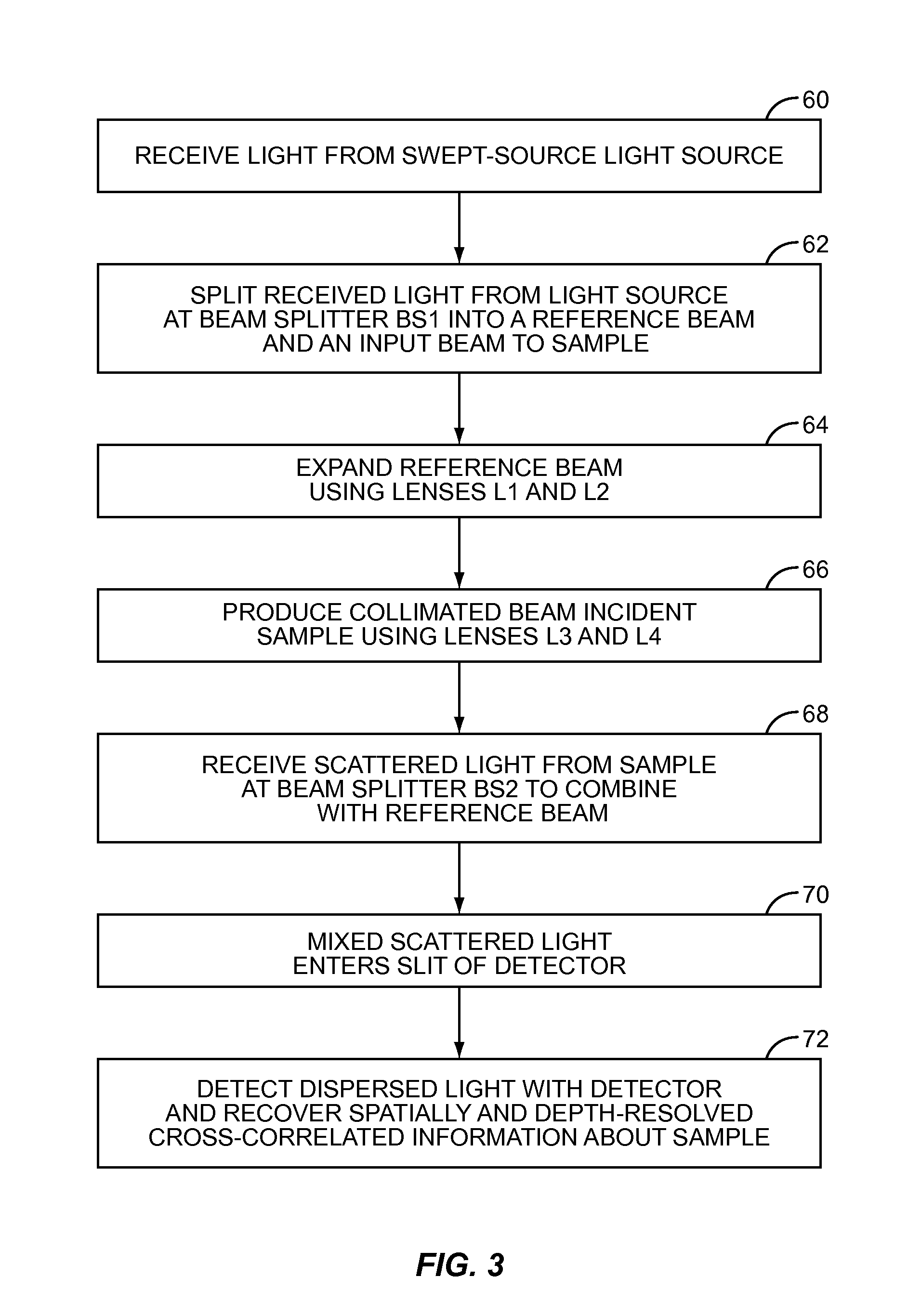Apparatuses, systems, and methods for low-coherence interferometry (LCI)
- Summary
- Abstract
- Description
- Claims
- Application Information
AI Technical Summary
Benefits of technology
Problems solved by technology
Method used
Image
Examples
Embodiment Construction
[0011]Embodiments disclosed herein involve low-coherence interferometry (LCI) techniques which enable acquisition of structural and depth information regarding a sample of interest at rapid rates. The acquisition rate is sufficiently rapid to make in vivo applications feasible. Biomedical applications of the embodiments disclosed herein include using the a / LCI systems and processes described herein for measuring cellular morphology in tissues and in vitro as well as diagnosing intraepithelial neoplasia, and assessing the efficacy of chemopreventive and chemotherapeutic agents. Prospectively grading tissue samples without tissue processing can also be accomplished using the embodiments disclosed herein, demonstrating the potential of the technique as a biomedical diagnostic.
[0012]In one embodiment, a “swept-source” (SS) light source is used in LCI to obtain structural and depth information about a sample. The swept-source light source is used to generate a reference signal and a sign...
PUM
 Login to View More
Login to View More Abstract
Description
Claims
Application Information
 Login to View More
Login to View More - R&D
- Intellectual Property
- Life Sciences
- Materials
- Tech Scout
- Unparalleled Data Quality
- Higher Quality Content
- 60% Fewer Hallucinations
Browse by: Latest US Patents, China's latest patents, Technical Efficacy Thesaurus, Application Domain, Technology Topic, Popular Technical Reports.
© 2025 PatSnap. All rights reserved.Legal|Privacy policy|Modern Slavery Act Transparency Statement|Sitemap|About US| Contact US: help@patsnap.com



